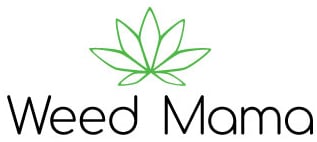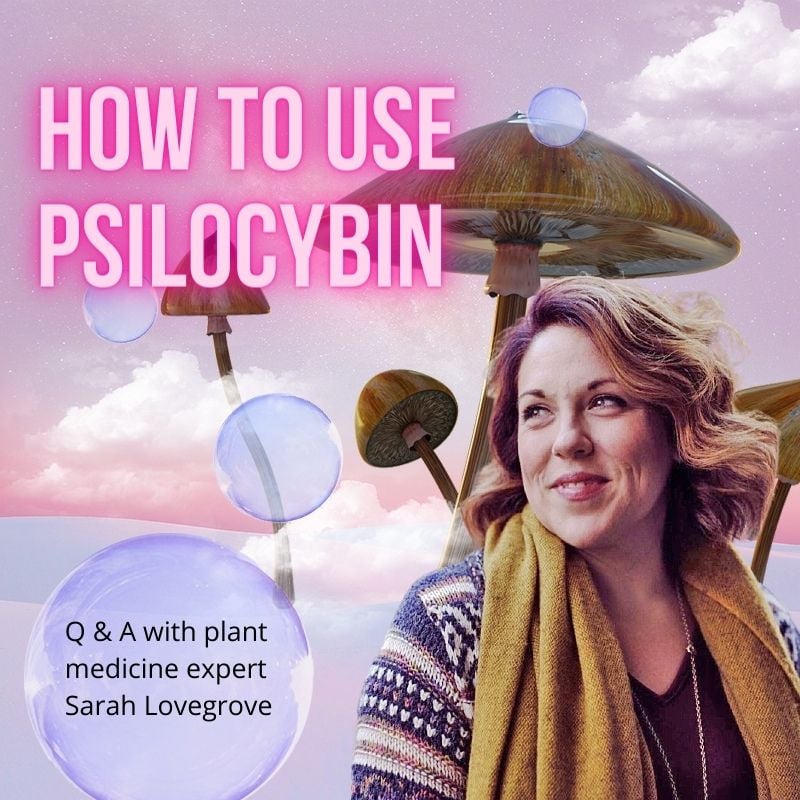I’ve been using psilocybin recently and have written a few articles for the blog on my experience with microdosing with psilocybin. Sarah Lovegrove- a former nurse and now plant medicine consultant reached out to me for a consultation on psilocybin. Sarah agreed to answer some common questions readers have about how to use psilocybin.
*this information is for educational purposes and shouldn’t be considered medical advice
- Q-Sarah, tell us a bit about yourself and your background with psilocybin
- Q- What are the benefits of using Psilocybin
- Q- What advice do you have for anyone who wants to try psilocybin
- Q- Is there anyone who shouldn’t use psilocybin or needs to use caution?
- Q- Are there any side effects or risks for using psilocybin?
- Q- What is a typical dose for microdosing and what is a typical dose for someone who wants the psychedelic experience?
- Q – There are different protocols for microdosing psilocybin, what do you recommend?
- Q- What have you found is the most significant change for you using psilocybin?
- Plant medicine has been around for centuries and it’s here to stay, knowing how to use them correctly is the key to finding inner peace
Q-Sarah, tell us a bit about yourself and your background with psilocybin

I’m a former ER nurse, educator and consultant. I offer health education through a harm reduction lens, supporting people in their safest use of cannabis and psychedelics and sharing evidence-based information about these medicines for therapeutic use.
I came into this work through my own lived experience with trauma and personal use of psychedelic medicines for healing. I began utilizing psilocybin therapeutically shortly after I left my position as an Emergency Nurse with Post Traumatic Stress Disorder in 2018.
Having done quite a bit of research about its safety and effectiveness for end-of-life distress as well as for the symptoms of PTSD, I started experimenting with psilocybin, first with microdosing then exploring varying doses in a variety of settings.
I’ve also had one psychedelic assisted psychotherapy session as a patient in which both MDMA and psilocybin were used. I continue to utilize psilocybin on a regular basis to support my mental health and overall wellness.
Q- What are the benefits of using Psilocybin
The benefits of psilocybin are varied and being explored at length by researchers across the world at this time. Many individuals who have used psilocybin have reported improved overall mood, lessened anxiety, decreased symptoms of depression, enhanced creativity, improved relationships or connection to others, and so much more.
With this psychedelic renaissance we are now in, there has been an explosion of promising research around the potential benefits of psilocybin for depression, smoking cessation, PTSD, end-of-life distress, and beyond.
The psilocybin advocacy group Therapsil (based out of Victoria, BC) has now helped over 41 patients obtain legal exemptions for therapeutic psilocybin use, with many more awaiting approval due to the promising therapeutic effects and benefits many are experiencing with this medicine.
Q– What advice do you have for anyone who wants to try psilocybin
If you’re curious about using psilocybin, for the first time or with a new intention, I invite you to first self-explore the following topics and questions:
Establish your intention with psilocybin use. Why are you interested in consuming it? Is it for therapeutic use or recreation? Your intention informs the dose you should consume, and intention ultimately impacts the overall experience with the medicine.
Explore any previous experiences with psilocybin and psychedelics. If your only lived experience with psilocybin was taking an unknown amount of shrooms 20 years ago at a Grateful Dead Concert, you may be hesitant to have another similar experience. If you’ve never had any experience with psychedelics, stigma or misinformation may be internalized, manifesting as fear or anxiety. Consider talking to someone you trust with experience using psychedelics for therapeutic use.
Two of the most important factors to consider are set and setting.
Set includes one’s mindset, mental state and intention preceding and during the experience. With this, one should honestly consider their capacity to undergo the psychedelic experience, often considered to be transformative experiences that could potentially bring up unexplored trauma or negative emotions. Assess your existing support system and current mental health experience.

Consideration of setting involves the physical and social environment in which the psychedelic experience will be occurring. This is often quite subjective, but involves decreasing distractions or negative stimuli to create a safe container for the therapeutic experience.
Q– Is there anyone who shouldn’t use psilocybin or needs to use caution?
Please consider your current medications and substance use – if you’re currently on any medications that regulates serotonin, including the majority of mental health medications, your experience could be impacted (increased or decreased sensitivity to psilocybin); and co-administration of certain medications with psilocybin could put the individual at higher risk of adverse reactions, such as the medical emergency known as Serotonin Syndrome.
Other psychedelic medicines also have significant side effects with pharmaceutical medications such as MAOI’s and tryptamines, so all medications should be considered before exploring any psychedelic use.
Co-administration of psilocybin with any other substances including cannabis, alcohol, ketamine, other psychedelics, opioids, methamphetamines, or other illegal drugs could significantly impact the psilocybin experience, with increased potential for negative outcomes.
People who should consider avoiding psychedelic use or who should consider consulting with medical professionals are individuals who are currently experiencing instability in their mental health, have complex requirements for their care of their physical or mental health, or are on any medications/substances.
Q– Are there any side effects or risks for using psilocybin?
Although psilocybin has one of the safest substance profiles in terms of physical risk or harm, as well as the lowest rate of substance-related visits to Emergency Departments – no substance use is without risk.
Aside from the risk of medication interaction and Serotonin Syndrome (as discussed above), one of the most significant risks that comes with psilocybin use is psychological side effects.
Psychedelic experiences can be profound, spiritual or transformative in nature, but can potentially unearth memories, emotions, or traumas that we may or may not be ready to address on a conscious level.
Negative or traumatic psychedelic experiences have been linked to onset of anxiety disorders, depression, psychotic episodes, onset of symptoms of schizophrenia, and suicide.
Q- What is a typical dose for microdosing and what is a typical dose for someone who wants the psychedelic experience?
A typical microdose is defined as less than one gram of psilocybin, but starting with a subperceptual dose (meaning you cannot feel the effects of it) and increasing in small amounts is often the safest place to start to feel out the effects of the medicine.
A good rule to follow when starting the use of any substance for the first time is Start Low & Go Slow. Various doses have varying effects in terms of “trips” or therapeutic effects, with a great deal of variability between people and psilocybin medicines depending on numerous factors.
The following is a dosing chart I have compiled based on the presentation of Dr. Pamela Kyrskow (MD) at the 2020 Psychedelic Psychotherapy forum – it should be considered suggested starting guidelines, not medical advice.
Suggested Guidelines with Dosing Ranges with Psilocybin
| Dose | Dose Weight | Description of Potential Experiences |
|---|---|---|
| *Dosing of psilocybin is routinely discussed in terms of weight in grams – referring to weight of dried organic mushroom product – please consider variability in content of psilocin. | ||
| Microdose | 0.10g – 0.30g | “Subperceptual, subsensorium” |
| Minidose | 0.30g – 1 gram | “Felt & functional” |
| Standard Dose | 1g – 3 grams | Potential as “therapeutic range”; social, functional; optimal for psychedelic-assisted psychotherapy? |
| Heavy “Macro” Dose | 3 – 5 grams | Consciousness shifts to “inward focus”, loss of functioning fluctuates throughout experience, greater potential for physical purging |
| “Heroic” Dose | 5 -7+ grams | Deeply spiritual, transformative |
Psilocybin is not a medicine that can or should be taken every day, even in microdoses. Due to the interaction of psilocybin with the naturally occurring hormone serotonin, daily use could increase risk of adverse effects such as Serotonin Syndrome or cause long-term damage to your serotonin receptor system.
“Tolerance” to psilocybin is built up over time and with prolonged use, particularly with regular microdosing or routinely taking larger doses. Over time, individuals may find themselves requiring a higher dose of psilocybin to achieve the similar therapeutic effects.
To avoid building a tolerance to the effects of psilocybin, it is suggested that microdosing be limited to 2-3 times a week (maximum) and larger “macro” doses should be explored intermittently and with intention.
Q – There are different protocols for microdosing psilocybin, what do you recommend?
Although no formal dosing schedules are available from medical professionals or formal medical bodies, many psychedelic researchers have proposed microdosing protocols that are available to help guide your own experience with microdosing.
Two of the most popular protocols available for psilocybin microdosing are the “Stamets Stack” (established by world-renowned mycologist Paul Stamets) involving a prescribed stack of psilocybin + niacin + lion’s mane with a schedule of four days on and three days off; and the Jim Fadiman Protocol involving a microdosing schedule of one day on and two days off.
These dosing schedules are a great place for a beginning microdoser to start for their own journey, but each person should adapt to their own experience and intentions; and monitor for adverse effects with higher or more regular doses.
Q- What have you found is the most significant change for you using psilocybin?
Beyond the objective healing I have experienced in terms of overall health factors (improved sleep/decreased nightmares, decreased suicidality & depression, improved control over anxiety, improved exercise tolerance, and improved overall average mood and affect), the greatest gift I have received with psilocybin was the capacity to see myself beyond my own mental health.
The moment I was able to shift perspectives and differentiate myself from the anxious stories, the somatic reminders of trauma, and the overwhelming flashback loops was profound – knowing I was more than those parts of myself; and this has been a lesson that has grown with me ever since, providing me with a safe foundation upon which to deconstruct and heal my own traumatic experiences.
Plant medicine has been around for centuries and it’s here to stay, knowing how to use them correctly is the key to finding inner peace
Using plants like psilocybin and cannabis can help you in many ways to feel better and cultivate a deeper relationship with yourself and the world around you. Knowing how to use these plants properly is how you’ll achieve these results.
If you would like to learn more about using psilocybin or book a consultation with Sarah Lovegrove, you can visit her website sarahlovegrove.ca you can also follow Sarah on Instagram @sarahlovegr0ve

